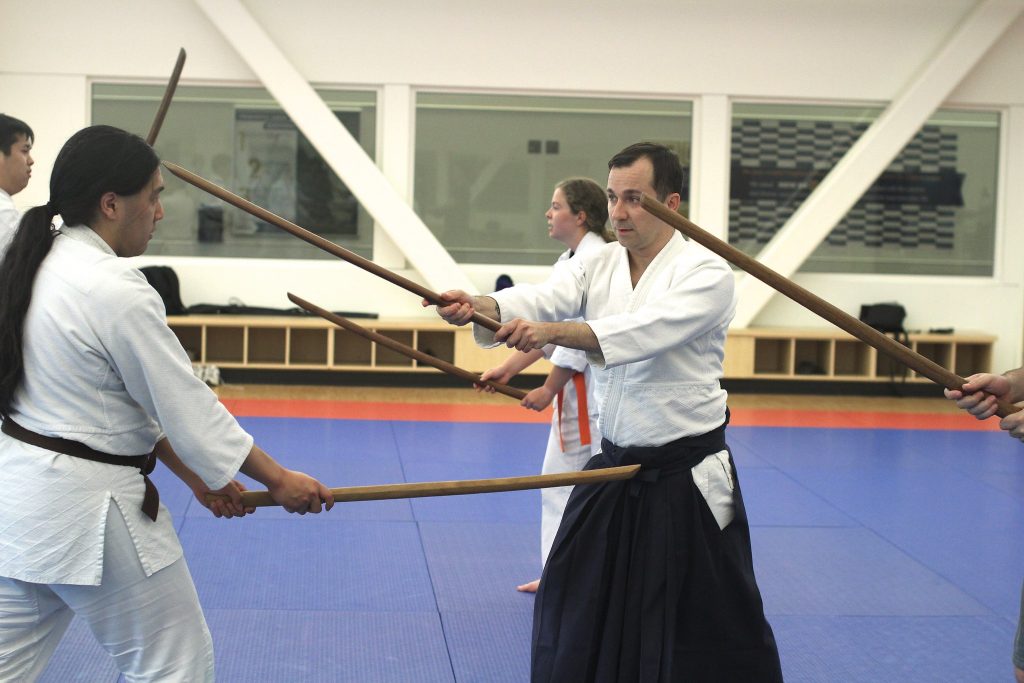Morgan Comeaux

Aikido was developed by Morihei Ueshiba, a martial arts prodigy who attained great strength and fighting ability. Morihei Ueshiba had an awakening that was crucial to his career. He constructed a budo that led him to the practice of harmony and peace. Following World War II, he named his art aikido. According to Barry Kroll’s “Arguing with Adversaries: Aikido, Rhetoric, and the Art of Peace,” aikido is “a word consisting of three characters that literally mean ‘way [do] for the Coordination or Harmony [ai] of Mental Energy or Spirit [ki].” The name reflects a deepened spirituality and commitment to an “art of peace” (Kroll 455).
Kroll suggests that aikido can serve as a model for rhetorical argument: “The standard response to an attack, assuming one chooses not to retreat, is to block and counterattack. This is as true in written argumentation (e.g., refutation, rebuttal, counterclaim) as it is in most martial arts” (452). Aikido can inspire a non-violent art of communication whose purpose is to align, agree, redirect, and resolve. The key to aikido is to enter into a conversation and blend into a compromise. Verbal aikido needs these four principles:
- Align: Place yourself in another’s position and assume their vantage point. To do this, ask yourself: Why is this person acting or thinking this way? How can I better understand their point of view?
- Agree: Look in the same direction. If this were me, would I appreciate being treated this way? Or: If I were treated like this, I would be angry too. The purpose of the agreement tactic is to arrive at mutual feeling and understanding.
- Redirect: Team up and work together! Redirecting differences will allow you both to work together to find a way to resolve the situation. What can we do to make the situation better?
- Resolve: What compromises are acceptable for you both? Maybe you simply need to agree to disagree. To achieve this, alter what they desire and what you desire to create a scenario that satisfies both of you.
Aikido is used “to contribute to bridging cultures,” and “some communication training methods have used the Japanese martial art of aikido as a model” (De Baets and Van Praet). The art of communication inspired by aikido is believed to mend relationships between couples, friends, and business communication and encounters. Conflict can come from differences of opinion, misunderstandings, and emotions. By using aikido, the goal is to turn anger and aggression into compassion and empathy. For example, in a relationship, the goal is to care and love the uniqueness of your significant other. Agreement may not be easy on some things, but approaches to communication can be modified for better results. Shifts in dialogue and compassion offer a deeper connection and allow true communication to take place.
Sources
- De Baets, Greet, and Ellen Van Praet. “The Potential of Aikido as a Means to Improve Intercultural Encounters and Communication.” Unsettling Language, Sociolinguistics Symposium 23, 7–10 June 2021, University of Hong Kong, Hong Kong, China.
- Kroll, Barry. “Arguing with Adversaries: Aikido, Rhetoric, and the Art of Peace.” College Composition and Communication, vol. 59, no. 3, 2008, pp. 451–72.
